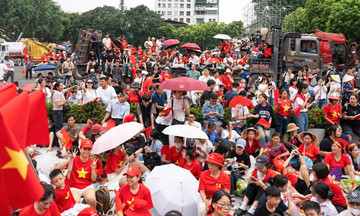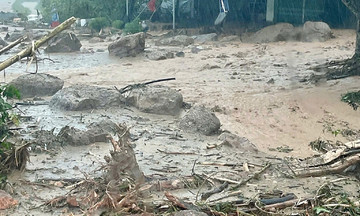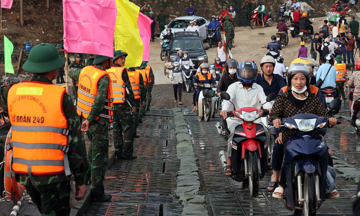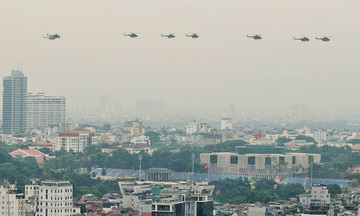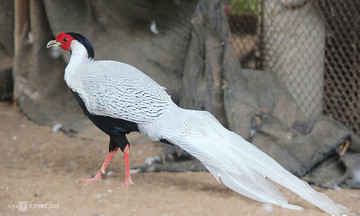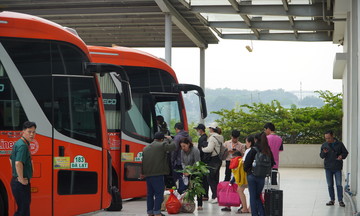The 47th session of the World Heritage Committee took place in Paris from 7/7 to 16/7, with the participation of 195 member states.
Tran Thi Hoang Mai, Director of the Hai Phong Department of Culture, Sports and Tourism, a member of the Vietnamese delegation attending the session, said the nomination dossier centers around the Truc Lam Zen school, a distinctly Vietnamese Buddhist sect founded by King-Monk Tran Nhan Tong in the 13th century. It is both a cultural heritage and a spiritual symbol that remains vibrant today.
Vietnam initiated the nomination process in 2012 and has been working with ICOMOS, UNESCO's advisory body, for 13 years for evaluation. At least three official ICOMOS delegations and international experts have visited and assessed the dossier in the three provinces of Quang Ninh, Hai Phong (formerly Hai Duong), and Bac Ninh (formerly Bac Giang), where the heritage complex is located.
 |
Hue Quang Tower and the Ancestral Tower Garden in the Yen Tu Relic Complex. Photo: Minh Cuong |
According to the nomination dossier, the complex has a total core zone area of 525.75 ha and a buffer zone area of 4,380.19 ha. The core zone includes 12 main heritage components reflecting the formation, expansion, and revival of the Truc Lam Zen school. The buffer zone plays a role in protecting the cultural landscape and ensuring the integrity and connectivity of the complex. It is strictly managed under the provisions of Vietnam’s Law on Cultural Heritage and Forestry Law.
The 12 heritage sites within the Yen Tu - Vinh Nghiem - Con Son Kiep Bac complex of monuments and landscapes are:
| 1 | Yen Tu Pagoda (Hoa Yen) | Quang Ninh | The center of King-Monk Tran Nhan Tong’s religious practice, where the Truc Lam Zen school was formed. |
| 2 | Ngoa Van Hermitage | Quang Ninh | Where the King-Monk passed away, considered the most sacred site of the Zen school. |
| 3 | Mot Mai Pagoda and Bao Sai Pagoda | Quang Ninh | Ancient meditation sites on the Yen Tu pilgrimage route, representing the practice of cultivation amidst the sacred forest. |
| 4 | Hue Quang Tower and Ancestral Tower Garden | Quang Ninh | The mausoleum of the King-Monk and his major disciples, expressing reverence and the continuation of the Truc Lam spirit. |
| 5 | Tung Road and Giai Oan Pagoda | Quang Ninh | An ancient pilgrimage route with architecture in harmony with nature, a space for spiritual practice, worship, and commemoration. |
| 6 | Lan Pagoda (Long Dong) | Quang Ninh | A center for preaching and training monks, associated with the organizational activities of the Truc Lam Zen school. |
| 7 | Vinh Nghiem Pagoda (Duc La) | Bac Giang | A center for printing and preserving over 3,000 Truc Lam woodblocks, recognized by UNESCO as a world documentary heritage. |
| 8 | Bo Da Pagoda | Bac Giang | A place for spiritual practice and training monks, notable for its system of ancient texts and unique tower garden. |
| 9 | Dum Hermitage | Bac Giang | An ancient hermitage site associated with Truc Lam patriarchs and Zen masters. |
| 10 | Con Son Pagoda | Hai Duong | The place of practice of the Third Patriarch Huyen Quang, the center for the development of the Zen school’s engaged Buddhism philosophy. |
| 11 | Kiep Bac Temple | Hai Duong | Associated with Tran Hung Dao, a symbol of the combination of national protection and the Truc Lam Buddhist spirit. |
| 12 | Bach Dang Stakes Field (Yen Giang) | Quang Ninh | A historical relic reflecting the engaged Buddhism philosophy and the spirit of protecting peace and national independence. |
Mai said that during the evaluation process, ICOMOS requested that the dossier clearly demonstrate outstanding universal value. In response, Vietnam affirmed that the Truc Lam Zen school is a unique system of thought, harmoniously combining Mahayana Buddhism, Confucianism, Taoism, and Vietnamese folk beliefs. This ideology not only encompasses the philosophy of spiritual practice but also permeates national governance, education, diplomacy, and medicine, clearly demonstrating the connection between religion and life.
This is also the only Buddhist sect in the world founded by a king who abdicated to pursue monastic life: King-Monk Tran Nhan Tong. He not only relinquished the throne but also shaped an engaged Buddhism philosophy, in which practitioners do not withdraw from the world but actively engage in serving society.
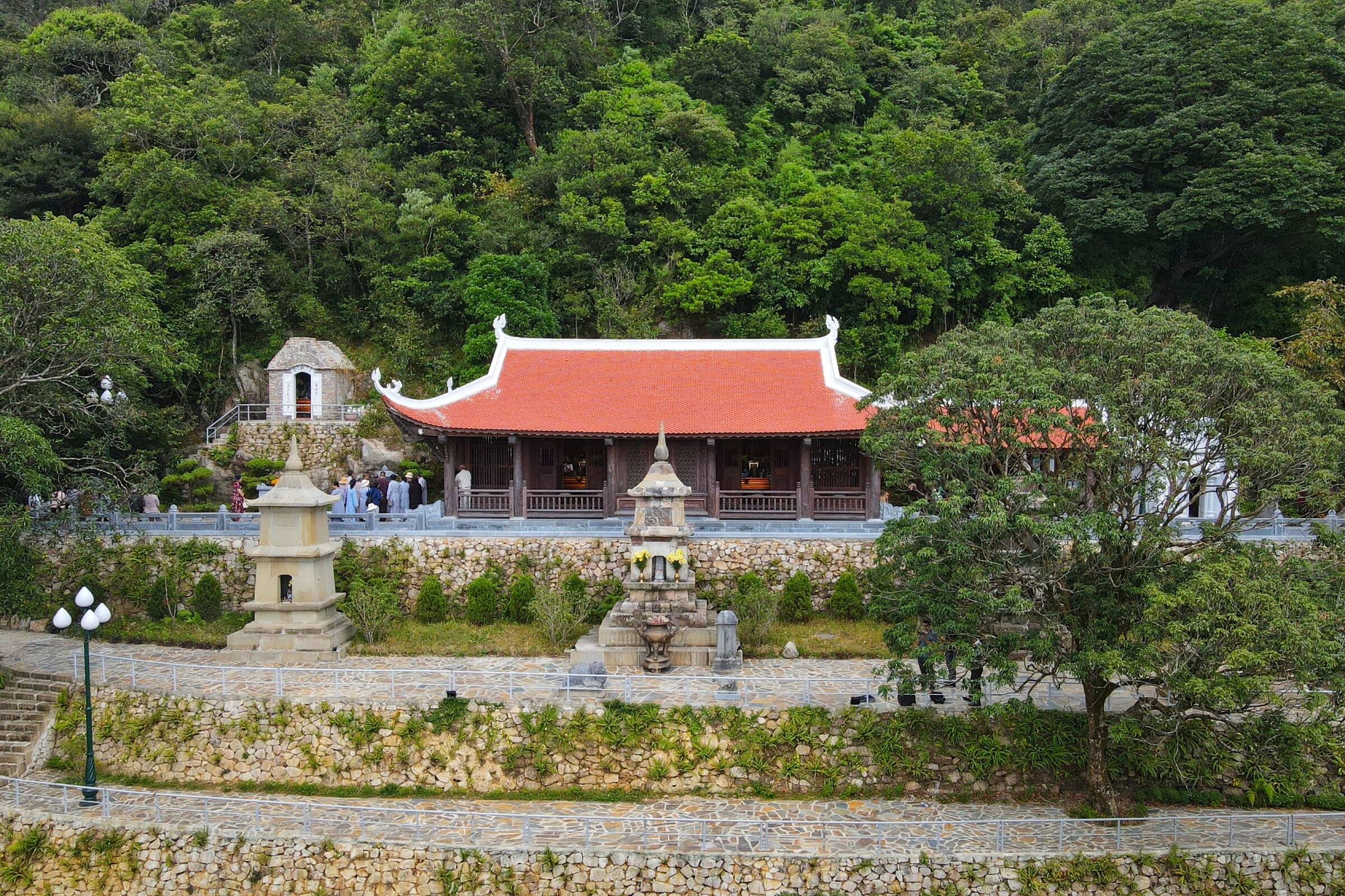 |
Ngoa Van Hermitage, where the King-Monk passed away, is considered the most sacred site of the Truc Lam Zen school. Photo: Le Tan |
ICOMOS previously expressed concern that the content of the dossier was fragmented with multiple narratives. However, Vietnam clarified that all components of the complex focus on telling one core story: the formation and development of Truc Lam Buddhism. This complex fully reflects the stages of this tradition: its birth at Yen Tu, its spread through Vinh Nghiem, and its flourishing development at Con Son Kiep Bac.
The cultural value of Truc Lam Zen is expressed through the system of pagodas, towers, hermitages, pilgrimage routes, woodblocks, and stone steles, purposefully planned within the sacred natural landscape. The philosophies of "non-self" and "engaged Buddhism" create a distinct Vietnamese Buddhist identity compared to many other schools in the region. Festivals such as the Yen Tu spring festival and the Con Son Kiep Bac festival are still held annually, continuing the centuries-old spiritual tradition.
Le Tan





